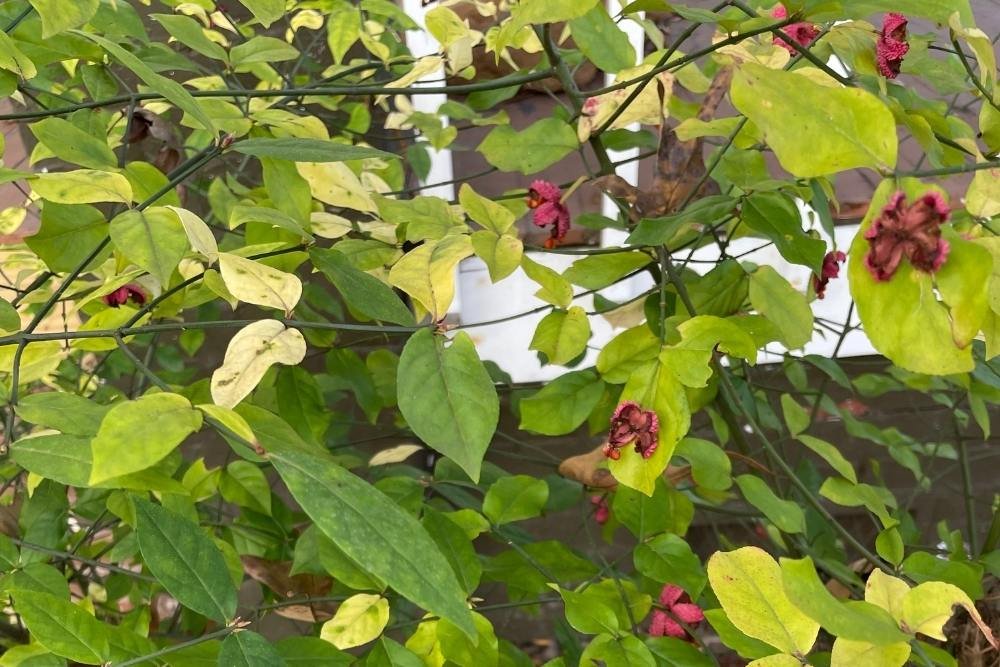Strawberry Bush
Image from Matt Whitaker
Scientific Description: Strawberry Bush – Euonymus americanus – is a deciduous, perennial shrub native to the southern and mid-Atlantic US. It is a member of the bittersweet (Celastraceae) family, which includes shrubs, woody vines, and many trees. It grows to a height of 4 to 12 feet with a similar diameter. It is found in deciduous woods, low sandy thickets, and swampy areas. It tolerates a full sun to shade but does best with afternoon shade. It will tolerate deep shade. It can tolerate dry soils for short periods and a variety of soil types. The small, greenish to yellow, inconspicuous flowers develop in the early summer (late May and June) and sit interestingly on top of the leaves. The flowers are pollenated by ants, beetles, and bees.
Image from Matt Whitaker
The common name for this species comes from the showy, warty crimson capsules that split open in the autumn to reveal bright red-orange seeds.
To propagate, the seeds should be collected in the autumn as they ripen on the shrub. The seeds should be removed from the pod and spread on a cloth, wrapped and stratified at 30o to 50oF for 90 to 120 days. A far more successful and easier treatment for propagation is via cuttings, which may be taken in the autumn and placed, without rooting a hormone, in a container of clean, moist soil and stored in a cool area and checked every 2-3 weeks for root development.
Strawberry bush has low maintenance needs and no serious problems with insects or diseases; however, it is occasionally susceptible to Euonymus scale.
Habitat Value: Many species of birds, including cedar waxwings, wild turkey, cardinals and grouse; small mammals, including squirrels; and white-tail deer, feed on the fruit/seeds and browse on the leaves of strawberry bush.
Landscape Value: By Matt Whitaker of WMWA Landscape Architects
Image from Matt Whitaker
Euonymus americanus, strawberry bush, or hearts-a-busting, is a superior alternative for the non-native, invasive flaming Euonymus you see so often planted in yards on Lookout Mountain. The invasive version is planted for its fall color. Our native American Euonymus has equally dramatic fall color when it receives adequate sunlight. In addition to the fall color, the peculiar splitting fruit make their own dramatic late summer, early fall show before the fall color begins. If you have the invasive version in your yard, please consider replacing it with this one to support birds and pollinators and avoid the ecosystem threat when birds deposit its seeds in the forest.
This shrub makes an excellent background or specimen in the landscape. I have planted it at my house as a screen. While it tolerates deep shade, it is at its best when exposed to at least a half day of full sun. It does fine in near full sun, where the form is denser and fall color most intense. Heavy deer browsing has reduced our native stands of strawberry bush, and our urban yards are ideal locations to help maintain local biodiversity.




